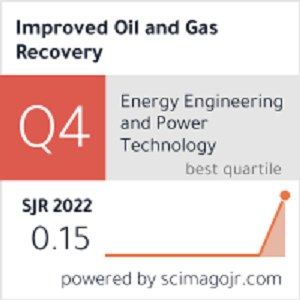Gas Cap Size in Thin Oil Rims: Effect on Oil Recovery Efficiency
DOI: 10.14800/IOGR.1299
Abstract
Oil recovery efficiency from thin oil rims is generally low due to various contributing factors. The influence of gas cap size on oil recovery is particularly critical, as the gas cap drive mechanism can become predominant, significantly impacting the oil recovery factor, especially in the presence of a large gas cap. While a water drive mechanism is typically considered optimal for oil displacement in petroleum reservoirs, its effectiveness in thin oil rims is contingent on not displacing oil into the gas zone.
This simulation study investigates the impact of gas cap size on oil recovery efficiency under the influence of both strong and weak aquifers, utilizing data from a thin oil rim in the Niger Delta. The study simulates four scenarios: a strong aquifer with a large gas cap, a weak aquifer with a large gas cap, a strong aquifer with a small gas cap, and a weak aquifer with a small gas cap. The results indicate that oil recovery efficiency ranges from 29% to 31% in scenarios with large gas caps, whereas scenarios with small gas caps achieve recovery efficiencies between 49% and 62%.
These findings suggest that large gas caps in thin oil rims constrain oil recovery, regardless of aquifer strength. Consequently, the study supports a field development strategy that prioritizes the extraction of gas from large gas caps in thin oil rims prior to oil production.
Downloads
Published
How to Cite
Issue
Section
License
Copyright (c) 2024 The Author(s)

This work is licensed under a Creative Commons Attribution 4.0 International License.












